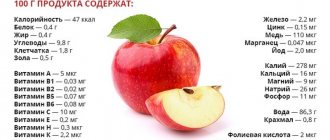Trapezium (concept, definition):
A trapezoid (from ancient Greek τραπέζιον - “table” from τράπεζα - “table”) is a convex quadrilateral in which two sides are parallel, and the other two sides are not parallel.
A trapezoid is a convex quadrilateral with only one pair of sides parallel.
A trapezoid is a convex quadrilateral in which two sides are parallel and the sides are not equal to each other.
Rice. 1. Trapezoid
A convex quadrilateral is a quadrilateral whose all points lie on the same side of any straight line passing through its two adjacent vertices.
Solving problems on the topic “Parallelogram”
In the last lesson we already looked at a number of problems related to parallelograms and trapezoids. In this lesson we will continue to solve various examples on this topic.
Example 1.
The perimeter of the parallelogram is , . Which side of the parallelogram does the angle bisector intersect? Find the segments that are formed at this intersection.
Given: – parallelogram; , – bisector.
Solution:
Rice. 1
Let . Let's take advantage of the fact that the perimeter of a parallelogram is equal to . Then: .
How to find out: which side will the bisector intersect?
To do this, we will use the following reasoning. Let the bisector intersect the side (or its extension) at the point. Then: (by definition of a bisector), (property of internal one-sided angles for parallel lines). Hence: – isosceles. Means, . Means, .
We have practically answered the second question of the problem: .
Answer: the bisector intersects the side and divides it into segments and.
Example 2.
The sides of a parallelogram are equal. The bisectors of two angles adjacent to the larger side divide the opposite side into three segments. Find these segments.
Given: – parallelogram; – bisectors.
Find:
Solution:
Rice. 2
If we use the solution to Example 1, we can immediately conclude that the triangles are isosceles (since , ). We get that . Then: .
Answer: .
Example 3.
Through an arbitrary point of the base of an isosceles triangle, two straight lines are drawn parallel to the lateral sides. Prove that the perimeter of the resulting quadrilateral is equal to the sum of the lateral sides of the triangle.
Given: – isosceles triangle (); .
Prove:
Proof:
Rice. 3
– parallelogram (by definition – since: ). Let us prove that the triangles are isosceles. Indeed: – as appropriate. On the other hand, (property of an isosceles triangle). This means that the triangles are isosceles. Then, that is what needed to be proven.
Proven
Types of trapezoids:
An isosceles trapezoid or isosceles trapezoid is a trapezoid whose sides are equal.
Rice. 2. Isosceles trapezoid
A rectangular trapezoid is a trapezoid with one of its side angles being straight.
A rectangular trapezoid is a trapezoid that has right angles on its sides.
Rice. 3. Rectangular trapezoid
Repetition of the properties and characteristics of a parallelogram
Obviously, to solve problems on the topic “Parallelogram and trapezoid”, it is necessary to repeat the basic concepts associated with these figures. Let us recall their properties and characteristics.
Let's first consider a parallelogram.
Definition. A parallelogram is a quadrilateral
Rice. 1. Parallelogram
Basic properties of a parallelogram:
In order to be able to use the specified properties when solving problems, we need to understand whether the specified quadrilateral is a parallelogram or not. To do this, you need to know the signs of a parallelogram.
Theorem. The first sign of a parallelogram. If in a quadrilateral two opposite sides are equal and parallel (see Fig. 2), then this quadrilateral is a parallelogram . parallelogram.
Rice. 2. The first sign of a parallelogram
Theorem. The second sign of a parallelogram. If in a quadrilateral every two opposite sides are equal (see Fig. 3), then this quadrilateral is a parallelogram . parallelogram.
Rice. 3. Second sign of a parallelogram
Theorem. The third sign of a parallelogram. If in a quadrilateral the diagonals are divided in half by the point of intersection (see Fig. 4), then this quadrilateral is a parallelogram . parallelogram.
Rice. 4. The third sign of a parallelogram
Elements of a trapezoid: bases, sides, midline and height:
The parallel sides of the trapezoid are called the bases of the trapezoid , and the other two non-parallel the lateral sides .
Rice. 4. Trapezoid
AD and BC are the bases of the trapezoid , AB and CD are the lateral sides of the trapezoid .
AD – larger base of the trapezoid, BC – smaller base of the trapezoid.
The segment connecting the midpoints of the lateral sides of the trapezoid is called midline .
Rice. 5. Trapezium and midline
The distance between the bases of a trapezoid is called the height of the trapezoid .
Rice. 6. Trapezoid
The height of the trapezoid (h) is determined by the formula:
where b is the larger base of the trapezoid, a is the smaller base of the trapezoid, c and d are the sides of the trapezoid.
The best exercises for working the trapezius
Now let's look at exercises that will help you achieve maximum results when working your trapezius muscles.
Shrugs with a barbell
Barbell shrugs are a staple exercise for the trapezius. Here, mainly their upper part works, since when lifting the barbell is located in front of you. The movement should be amplitude, as if at the top point you are trying to reach your ears with your shoulders. You can work with quite a lot of weight in this movement, so you can better feel the stretch in the muscles at the bottom. If necessary, use wrist straps and an athletic belt.
Use a medium, shoulder-width grip to avoid engaging your shoulders. When lifting, keep the barbell as close to your body as possible and minimize cheating - this method will lead to nothing but increasing the risk of injury from the movement. An alternative option is shrugs in Smith.
Shrugs with dumbbells
Dumbbell shrugs are an upper trapezius exercise. Here it is recommended to use less weight, but do more repetitions, this way you will more easily achieve intense pumping (blood supply to the muscles).
Since in this exercise the hands are turned parallel to each other, the forearms are actively involved in the work. Therefore, concentrate on keeping your arms straight and not bending your elbows. Then you will lift the dumbbells using the force of your trapezius, not your arms. You can also use straps.
To turn dumbbell shrugs into an exercise for your middle and lower trapezius, sit on a bench and lean forward slightly:
This will change the load vector, and you will compress your shoulder blades more strongly at the top. Due to this, most of the load will go to the middle and lower parts of the trapezius muscles.
Shrugs in the simulator
For this exercise you will need a lower block and a wide handle. Keeping your back straight, pull your shoulders up and slightly back. The biomechanics of the movement are different from the movements in classic barbell shrugs. By moving your shoulders back, you place more stress on your mid-trapezius and posterior deltoid muscles. This will make your upper back look more massive and lumpy from behind. In addition, the design of the block simulator predetermines a stronger stretch of the muscles at the lowest point, which only increases the efficiency of this exercise.
Shrugs with a barbell behind your back
This is a great exercise for the middle and lower trapezius. It is not entirely suitable for beginners, as it requires a developed muscular frame and good stretching of the shoulder joints.
For convenience, it is recommended to perform this exercise in a Smith machine. At the bottom point, slightly relax all the muscles of the shoulder girdle to lower the barbell as low as possible. But do not forget to keep your lumbar spine perfectly straight. The closer to your back you move the barbell when lifting, the harder your trapezius will work. A more distant position will place more stress on the rear deltoids.
Close-grip barbell row to the chin
The barbell chin row is a basic exercise that works both the trapezius and the shoulders. In this exercise, it is important to take it quite narrowly and keep your elbow above the level of the hand, then you will be able to work in full amplitude and load the entire trapezius muscle area. The wider you go, the more load is placed on the middle deltoids.
Alternative exercises: Smith row to the chin with a close grip, row of two dumbbells to the chin with a close grip, kettlebell row to the chin.
Deadlift
A review of exercises would be incomplete without mentioning the deadlift. Even its variety is not so important, be it classic, sumo, trap bar deadlift, Romanian deadlift or dumbbell deadlift. In this exercise, there is almost no dynamic load on the muscle group that interests us, but the trapezius carries a powerful static tension throughout the entire approach. Experienced athletes work with serious weights in this exercise, this predetermines the further growth of the trapezius. Therefore, it is powerlifters who, more often than others, can boast of impressive trapezius, even without doing separate exercises for this muscle group.
Also, the trapezoid bears part of the load when performing any horizontal rows for the thickness of the back: bent-over rows of a barbell or dumbbell, T-bar, lower block and others, as well as when using a narrow grip in vertical rows (pull-ups, lat pull-downs, etc. ). Indirectly, the load falls on the trapezius during many exercises for the deltoid muscles, for example, swings with dumbbells while standing, sitting or bent over, rowing a barbell to the chin with a wide grip, abducting the arms in the simulator for the rear delta and others.
Trapezoid properties:
1. The midline of the trapezoid is parallel to the bases and equal to their half-sum.
Rice. 7. Trapezium and midline
MN || BC, MN || A.D.
l = (a + b) / 2
2. The segment connecting the midpoints of the diagonals of the trapezoid is equal to half the difference of the bases and lies on the midline.
Rice. 8. Trapezoid
MN = (b – a) / 2
3. The sum of the internal angles of a trapezoid (and any other quadrilateral) is 360°.
The sum of the angles adjacent to the side of the trapezoid is 180°.
Rice. 9. Trapezoid
4. The point of intersection of the diagonals of a trapezoid, the point of intersection of the extensions of its sides and the middle of the bases lie on the same straight line.
Rice. 9. Trapezoid
5. The bisector of any angle of a trapezoid cuts off at its base (or continuation) a segment equal to the side.
Rice. 10. Trapezoid
AB = BK
6. If the sum of the angles at one of the bases of a trapezoid is 90°, then the segment connecting the midpoints of the bases is equal to their half-difference.
Rice. 11. Trapezoid
∠BAD + ∠CDA = 90°, MN = (AD – DC) / 2
7. A circle can be inscribed in a trapezoid if the sum of the lengths of the bases of the trapezoid is equal to the sum of the lengths of its sides.
Rice. 12. Trapezoid
AB + CD = AD + BC
In a trapezoid, its side is visible from the center of the inscribed circle at an angle of 90°.
Rice. 13. Trapezoid
The middle line in this case is equal to the sum of the sides divided by 2 (since the middle line of a trapezoid is equal to half the sum of the bases).
Rice. 14. Trapezoid
MN = (AB + CD) / 2,
MN = (AD + BC) / 2
8. The diagonals of a trapezoid divide it into 4 triangles.
Two of them, adjacent to the bases, are similar.
The other two, adjacent to the sides, have the same area.
Rice. 15. Trapezoid
Triangles BCO and AOD are similar. The similarity coefficient of triangles (k) is found as the ratio of the bases of the trapezoid. k = AD / BC. The ratio of the areas of these similar triangles is k2.
Triangles ABO and CDO have the same area.
9. Each diagonal at the intersection point is divided into two parts with the same length ratio as the ratio between the bases.
Rice. 16. Trapezoid
BC: AD = OC: AO = OB: DO
10. The diagonals of the trapezoid d1 and d2 are related to the sides by the ratio:
d12 + d22 = 2ab + c 2 + d 2
where b is the larger base of the trapezoid, a is the smaller base of the trapezoid, c and d are the sides of the trapezoid.
11. The midline of the trapezoid bisects any segment that connects the bases of the trapezoid, and also bisects the diagonals.
Rice. 17. Trapezoid
AK = KB, AM = MC, BN = ND, CL = LD,
KL – middle line
Rice. 17. Trapezoid
AK = KB, AM = MC, BN = ND, CL = LD,
KL – midline, UV – segment that connects the bases of the trapezoid
12. The middle line divides the trapezoid into two trapezoids, the areas of which are related as:
where b is the larger base of the trapezoid, a is the smaller base of the trapezoid, S1 and S2 are the areas of the formed trapezoids as a result of division by the middle line.
Rice. 18. Trapezoid
S1 – area of trapezoid MBCN,
S2 – area of trapezoid AMND
Trapezoid problem
Example 4. The bisectors of the angles at the vertices are drawn in a trapezoid. Find the angle between the bisectors.
Solution. It is interesting that the problem conditions and solution are equally suitable for the case of a parallelogram and a trapezoid. Let's do Fig. 14.
Rice. 14
- bisectors, they divide the corresponding angles in half, let's denote them and .
According to the property of a trapezoid.
Let's consider: .
Answer. .
Properties of an isosceles trapezoid:
1. The straight line that passes through the midpoints of the bases is perpendicular to the bases, thereby being the axis of symmetry of an isosceles trapezoid.
2. The height dropped from the vertex to the larger base of an isosceles trapezoid divides it into two segments, one of which is equal to half the sum of the bases, and the other to half the difference of the bases.
3. The angles at any base of an isosceles trapezoid are equal.
4. The sum of the opposite angles of an isosceles trapezoid is 180°.
5. The lengths of the diagonals of an isosceles trapezoid are equal.
6. A circle can be described around an isosceles trapezoid.
7. If the diagonals in an isosceles trapezoid are perpendicular, its height is equal to half the sum of the bases.
Recommendations for training the trapezius
- Shrugs are rightfully considered the best exercise for developing the trapezius, but many athletes do them incorrectly. You cannot use your biceps and forearms. Wrist straps help to cope with this very well. The elbows should be almost completely straight throughout the entire approach, then the load will be placed specifically on the trapezius.
- Don't use too much weight. When training the trapezius muscles, it is much more important to work in full amplitude and feel the maximum muscle contraction at the top point, holding it for 1-2 seconds.
- Do not tuck your chin to your chest when doing shrugs. This increases compression of the cervical spine and can lead to injury.
- Trapezius loves pumping. To properly “pump” these muscles with blood, use supersets, combining shrugs of any variation with pulling movements that also include the shoulders in the work, for example, with a close-grip chin row. Another option for increasing intensity is to perform dropsets at the end of each set: reduce the working weight and, without rest, do another set or two with a lighter weight.
- Trapezius is a relatively small muscle group; it is enough to train it once a week. It is optimal to combine it with back or shoulder training. To make the entire shoulder girdle look massive, do not forget to pay enough attention to your deltoids and neck muscles. If you notice that the trapezius has begun to overtake the shoulders in development, which visually makes the figure less wide in the shoulder girdle, just stop doing individual exercises for this muscle group.
- Trapezius training should be short but intense. As a rule, one or two exercises are enough to work this muscle group. Alternate different movements in each workout and perform them in different orders, then you will make progress faster.
- Watch your posture. Often, stooping in the cervical and thoracic spine prevents the trapezius from being fully trained. The athlete simply cannot perform the required movement in full amplitude and feel the muscle contraction.
- Exercise moderately. Overtraining of the trapezius muscles will lead to poor blood circulation in the neck muscles and the entire cervical spine. This is fraught with increased intracranial pressure, headaches and dizziness.
- Performing shrugs does not involve rotating the shoulder joints at the top point. For some reason, many novice athletes are guilty of this. When used with heavy weights, this rotation becomes one of the most damaging movements for your rotator cuff. The correct trajectory of movement involves raising and lowering the weight in one plane; there should be no extraneous movements.
Trapezoid height
The height of a trapezoid is the shortest segment in length that continues exactly from one base to the other. It plays a kind of auxiliary role in problems up to grade 10 with unknown sides and in those tasks where you need to complete a figure to a rectangle, for example.
To find the length of this segment, we need to know both bases (a and b), as well as the side c. It would also be useful to know the angle at a larger base α. The formulas here are quite simple and do not need proof.
How to find the sides of a trapezoid?
There are many different ways to solve this problem, but we will offer only a few of them.
First of all, you can find the sides using the middle line:
There is an alternative if you know the height and angle for a larger base:










